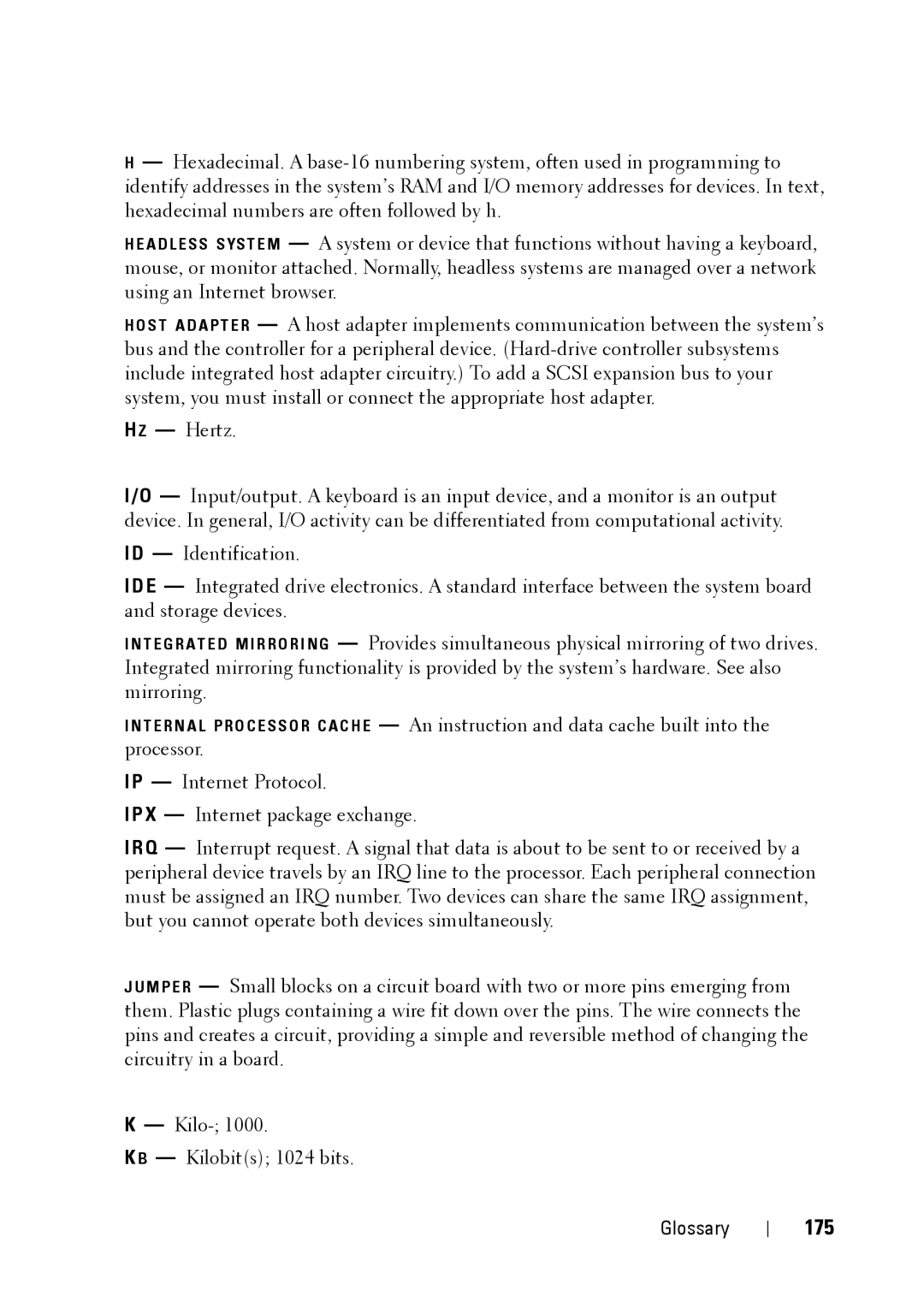H— Hexadecimal. A
H E A D L E S S S YS T E M — A system or device that functions without having a keyboard, mouse, or monitor attached. Normally, headless systems are managed over a network using an Internet browser.
H O S T A D A P T E R — A host adapter implements communication between the system’s bus and the controller for a peripheral device.
HZ — Hertz.
I/O — Input/output. A keyboard is an input device, and a monitor is an output device. In general, I/O activity can be differentiated from computational activity.
ID — Identification.
IDE — Integrated drive electronics. A standard interface between the system board and storage devices.
I N T E G R A T E D M I R R O R I N G — Provides simultaneous physical mirroring of two drives. Integrated mirroring functionality is provided by the system’s hardware. See also mirroring.
I N T E R N A L P R O C E S S O R C A C H E — An instruction and data cache built into the processor.
IP — Internet Protocol.
IPX — Internet package exchange.
IRQ — Interrupt request. A signal that data is about to be sent to or received by a peripheral device travels by an IRQ line to the processor. Each peripheral connection must be assigned an IRQ number. Two devices can share the same IRQ assignment, but you cannot operate both devices simultaneously.
J U M P E R — Small blocks on a circuit board with two or more pins emerging from them. Plastic plugs containing a wire fit down over the pins. The wire connects the pins and creates a circuit, providing a simple and reversible method of changing the circuitry in a board.
K —
K B — Kilobit(s); 1024 bits.
Glossary
